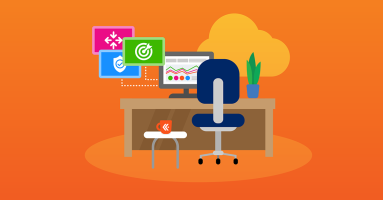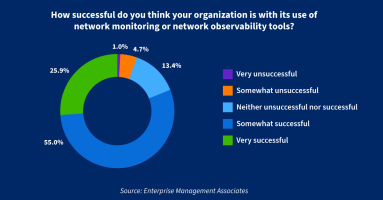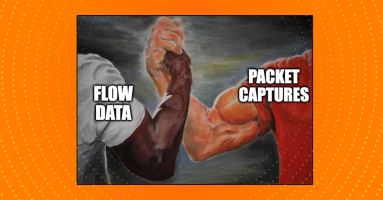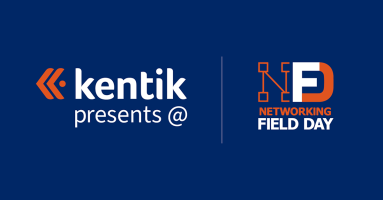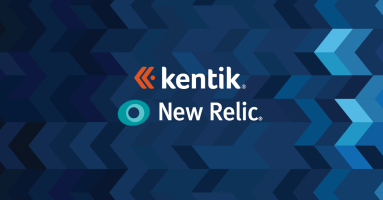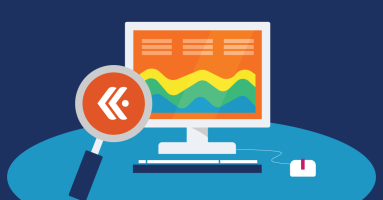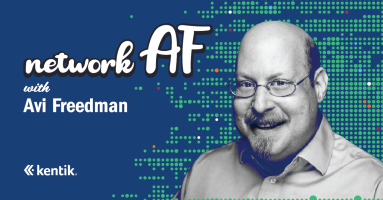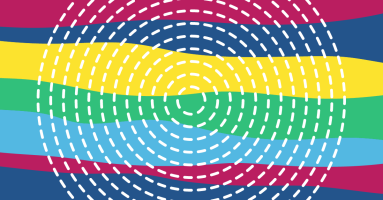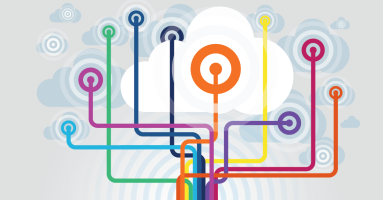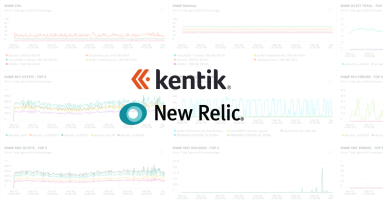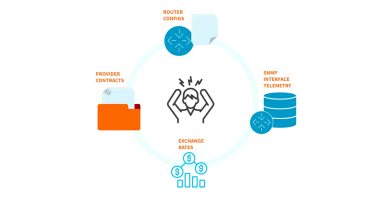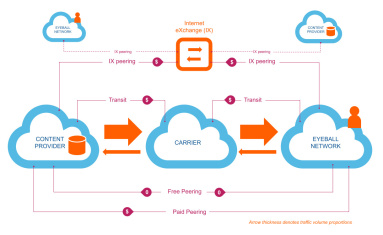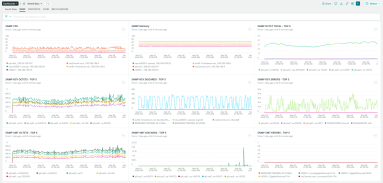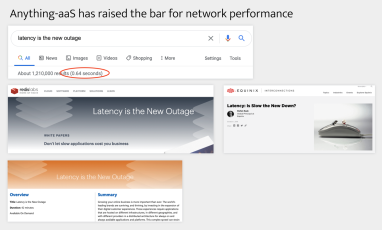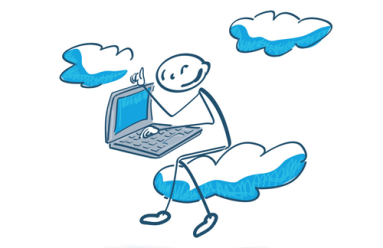Kentik Blog: Network Observability
























The age of dashboards is ending, as observability has only created more noise for network teams to sift through. Kentik SVP of Product, Mav Turner, lays out why true network intelligence requires a clean, contextual data foundation to finally create a network that thinks.
Kentik CEO and co-founder Avi Freedman explains why observability is not enough in the age of AI.
Modern network operators need modern observability tools. In this post, we explore why Deepfield — a traditional network flow analytics platform — falls short in providing comprehensive insights required for today’s network operations, and how Kentik’s modern data platform is purpose-built for today’s infrastructure teams.
We are excited to share that Kentik has been named a Value Leader in EMA’s 2024 Radar Report for Network Operations Observability. This recognition highlights our continued commitment to building an AI-powered, end-to-end observability platform for modern networks, helping network and cloud teams optimize their infrastructures for availability, performance, cost-efficiency, and security.
In today’s complex cloud environments, traditional network visibility tools fail to provide the necessary context to understand and troubleshoot application performance issues. In this post, we delve into how network observability bridges this gap by combining diverse telemetry data and enriching it with contextual information.
The network is the metaphorical plumbing through which all your precious non-metaphorical observability and monitoring data flows. It holds secrets you’ll never find anywhere else. And it’s more important today than ever before.
Let me tell you something you already know: Networks are more complex than ever. They are massive. They are confounding. Modern networks are obtuse superorganisms of switches, routers, containers, and overlays; a hodgepodge of telemetry from AWS, Azure, GCP, OCI, and sprawling infrastructure that spans more than a dozen timezones.
By providing a central, single source of truth, a unified data platform reduces the risk of miscommunication for large, complex networks. In this article, we dive into how data observability can play a critical part in network observability.
To fully capitalize on the promises of digital transformation, IT leaders have come to recognize that a mix of cloud and data center infrastructure provides several business advantages. Read on to learn how an observable network leads to a better customer experience.
The concept of network observability has taken hold in the market. But how are users adopting this technology, and what gaps remain? This article provides a taste of the user survey results from a newly released market study.
A packet capture is a great option for troubleshooting network issues and performing digital forensics, but is it a good option for always-on visibility considering flow data gives us the vast majority of the information we need for normal network operations?
There is a critical difference between having more data and more answers. Read our recap of Networking Field Day 29 and learn how network observability provides the insight necessary to support your app over the network.
The theme of augmenting the network engineer with diverse data and machine learning really took the main stage at the World of Solutions. Read Phil Gervasi’s recap.
With Kentik Synthetics, New Relic gains proactive insights about network performance and can ensure its customers have a reliable digital experience.
If you’re on the hook for the network that powers your organization, you may be hearing about network observability. This blog will help answer how network observability should become a part of your plans and what steps you can take.
In the old days, we used a combination of several data types, help desk tickets, and spreadsheets to figure out what was going on with our network. Today, that’s just not good enough. The next evolution of network visibility goes beyond collecting data and presenting it on pretty graphs. Network observability augments the engineer and finds meaning in the huge amount of data we collect today to solve problems faster and ensure service delivery.
On today’s episode of the Network AF podcast, Avi welcomes Elliot Noss, President, and CEO of Tucows. Elliot has a love and passion for the internet that started the moment he was introduced to it. This passion comes through as he discusses his goals in networking and the positive change he wants to make in solving cybercrime issues at the DNS level.
In the latest episode of Network AF, you’ll meet Janine Malcolm, director of network engineering at Salesforce. Here’s a recap of the podcast, where Janine talks about her journey to get to where she is today and how she became interested in networking itself.
In episode 2 of Network AF, Nina Bargisen joins Avi to discuss network interconnection and peering, her career in networking, and mentorship and diversity issues in network engineering.
Today our Co-founder and CEO Avi Freedman launches Network AF, his new podcast. Come and listen to all-things networking, cloud, the internet and more. The first episode is out today!
If you haven’t heard of network observability, you soon will, and you’ll be hearing it a lot. Some say it is just marketing hype and that networks have always been observable. This post will explore why that’s not the case.
With network observability from Kentik in New Relic One, you can correlate and analyze all of your telemetry data in one place: your applications, infrastructure, digital experience, and network data.
Network observability is a concise way to describe how NPM solutions are evolving to support IT organizations that are embracing DevOps and the cloud. In this post, EMA Analyst Shamus McGillicuddy takes a deeper dive into network observability.
In order to answer any question, network observability requires a broad range of telemetry data. It takes a capable platform to make the data useful. In this 4th part in the network observability series, Avi Freedman describes requirements for the data telemetry platform.
Today we expand our partnership with New Relic. Together, we’re deepening New Relic’s full-stack observability into the network layer and giving IT operations, SREs and development teams shared context to resolve issues quickly.
As today’s economy goes online, network costs can be a determinant factor to business success. Failure to strategize and optimize connectivity expenses will naturally result in a loss of competitiveness. Addressing customer needs, Kentik launched a new automated workflow to manage connectivity costs, timely instrument negotiations at contract term, and stay on top of optimization opportunities — all in Kentik’s user-friendly style.
With increasingly complex on-premises and cloud hybrid environments, managing the network has never been so tough. And that keeps network pros up at night.
In part 3 of the network observability series, Kentik CEO Avi Freedman discusses the different categories telemetry data. Avi shows how a complete network observability solution can answer an exponentially broader range of questions.
In part 2 of the network observability series, we tackle the first key to the input needed for network observability — from what networks and network elements we gather telemetry data.
The goal of network observability is to answer any question about your network infrastructure and to have support from your observability stack to get those answers quickly, flexibly, proactively, and interactively. In this post, Kentik CEO Avi Freedman gives his thoughts on the past, present, and future of network observability.
In part 1 of this blog series, Kentik director of technical product management Greg Villain discusses what matters with network interconnection and their cost considerations. Greg examines the different types of interconnections, necessary operational measures, and applicable elements of network observability.
Integrated application and network observability enables network, SREs, and developer teams to deliver reliable services with great user experience.
Cloud solutions architect Ted Turner describes how Kentik Synthetics easily uncovers network-related latencies that often cascade into cloud application performance problems — DevOps teams take note.
Explore the key differences between monitoring and observability and choose the right approach for effective system insights and troubleshooting.
In this blog, we dive into what SPAN Port Mirroring is, how it works, what it’s good at, and the drawbacks as well as best practices in using port mirroring.
The basics of network troubleshooting have not changed much over the years. When you’re network troubleshooting, a lot can be required to solve the problem. You could be solving many different issues across several different systems on your complex, hybrid network infrastructure. A network observability solution can help speed up and simplify the process.
Cloud Solution Architect Ted Turner describes a process of migrating all of applications to the cloud, and gives key takeaways as to how building your observability platform to understand both the application state as well as underlying infrastructure is key to maintaining uptime for customers.








